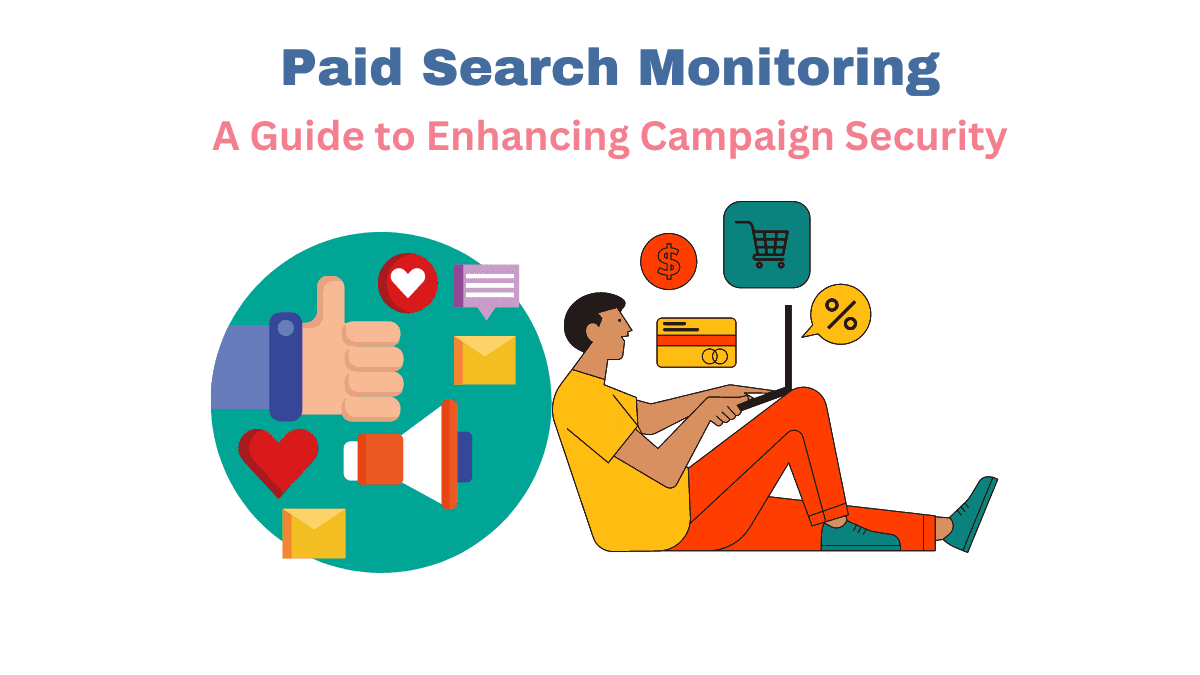In the fast-paced world of digital marketing, paid search campaigns are a crucial element for driving traffic and generating leads. However, without proper monitoring, these campaigns can fall prey to various security threats, leading to wasted budgets and lost opportunities. Paid search monitoring is essential to safeguard your campaigns and ensure optimal performance.
What is Paid Search Monitoring?
Paid search monitoring involves the continuous observation and analysis of your paid search campaigns to detect and prevent fraudulent activities, inefficiencies, and security breaches. It encompasses tracking metrics, analyzing traffic sources, and ensuring that your ads are displayed correctly and effectively.
Why Campaign Security Matters
Campaign security is vital for maintaining the integrity and profitability of your paid search efforts. Security breaches can lead to significant financial losses, damage your brand’s reputation, and distort your campaign data, making it challenging to make informed decisions.
Common Threats in Paid Search Campaigns
Click Fraud
Click fraud occurs when individuals or automated bots repeatedly click on your ads with malicious intent. This can deplete your advertising budget without generating any genuine leads. Detection methods include monitoring for unusual click patterns and high bounce rates. Prevention strategies involve using IP exclusions and implementing advanced click fraud detection software.
Ad Hijacking
Ad hijacking happens when competitors or malicious entities create ads that mimic your own, diverting traffic away from your site. Signs include sudden drops in click-through rates (CTR) and conversions. Preventative measures include regular ad audits and utilizing brand protection tools to monitor for unauthorized use of your ads.
Keyword Stuffing
Keyword stuffing involves overloading your ads or landing pages with excessive keywords to manipulate search rankings. This can lead to penalties from search engines and reduce the quality of your ads. Best practices to avoid keyword stuffing include focusing on relevant keywords and maintaining a natural flow in your ad copy.
Negative SEO
Negative SEO involves tactics used by competitors to sabotage your search rankings. This can include building spammy backlinks to your site or duplicating your content. Detecting negative SEO requires monitoring your backlink profile and traffic sources. Countermeasures include disavowing harmful links and regularly updating your content.
Tools for Paid Search Monitoring
Google Ads Tools
Google Ads offers built-in features for monitoring and securing your campaigns. These include automated rules, click quality filters, and detailed performance reports. Using these tools effectively can help you identify and mitigate threats early on.
Third-Party Monitoring Tools
Third-party tools provide additional layers of security and insights for your paid search campaigns.
- SEMrush: Offers comprehensive analytics and monitoring features, including competitor analysis and backlink auditing.
- Ahrefs: Known for its robust backlink analysis, it helps in detecting negative SEO and monitoring keyword performance.
- SpyFu: Focuses on competitor intelligence, providing insights into competitors’ keywords and ad strategies.
Best Practices for Enhancing Campaign Security
Regular Monitoring Routines
Setting up alerts for unusual activity and conducting periodic audits of your campaigns can help in early detection of threats. Regular reviews of your ad performance and traffic sources are crucial.
Data Analysis Techniques
Analyzing traffic patterns and identifying anomalies can reveal potential security issues. Look for sudden spikes or drops in traffic and investigate the sources.
Responsive Actions to Threats
When a threat is detected, immediate steps such as pausing affected ads, blocking suspicious IP addresses, and contacting your advertising platform’s support team can mitigate damage. Long-term strategies include continuously updating your monitoring tools and practices.
Case Studies
Examining case studies of successful paid search monitoring can provide valuable insights and practical lessons. Companies that have effectively safeguarded their campaigns often share common practices, such as robust monitoring routines and proactive threat management.
Conclusion
Paid search monitoring is a critical aspect of maintaining the security and effectiveness of your campaigns. By understanding common threats, utilizing the right tools, and implementing best practices, you can protect your investment and achieve better results. Continuous monitoring and proactive measures are key to enhancing campaign security.
FAQs
What is the primary goal of paid search monitoring?
The primary goal is to protect your campaign from fraudulent activities, inefficiencies, and security breaches, ensuring optimal performance and return on investment.
How can I tell if my campaign is under attack?
Signs of an attack include sudden drops in performance metrics, unusual traffic patterns, and increased costs without corresponding results.
Are third-party tools necessary for monitoring?
While not strictly necessary, third-party tools provide advanced features and additional layers of security that can significantly enhance your monitoring efforts.
How often should I audit my paid search campaigns?
Regular audits should be conducted at least monthly, with more frequent checks if you notice unusual activity or during high-traffic periods.
What are the costs associated with paid search monitoring?
Costs can vary depending on the tools and resources used. Free tools like Google Ads’ built-in features are available, while third-party tools may require a subscription.




